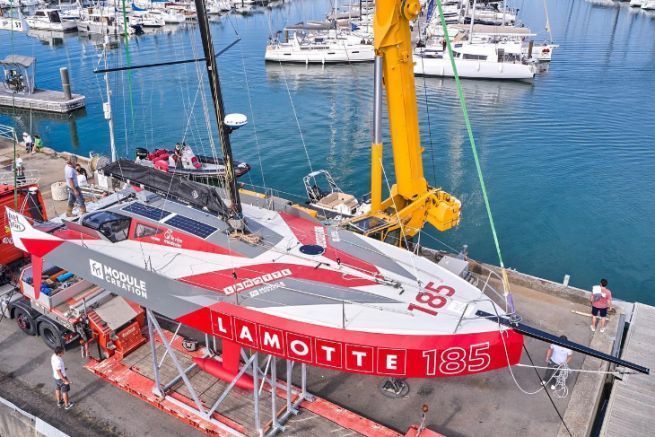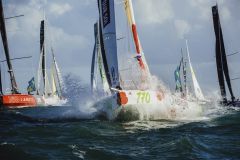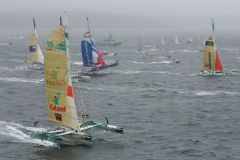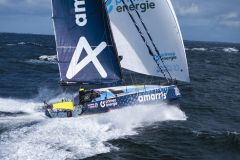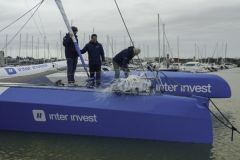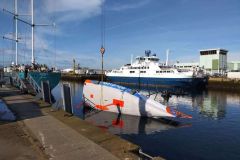Sam Manuard, a renowned architect in the category, gives us an overview of the Class40, a few weeks before the start of the Route du Rhum 2022.
New designs by Verdier, Lombard and VPLP were launched for the Transat Jacques Vabre 2021. What conclusions can you draw after the past season?
Nowadays, everyone makes scows. There is no more debate on the subject. There are always nuances on the scow theme. Lombard with the Lift has made a very powerful boat, VPLP with the Clak40 a boat that looks more versatile. It's progressing well and the different designs are pretty close in performance. Everyone has raised their game.
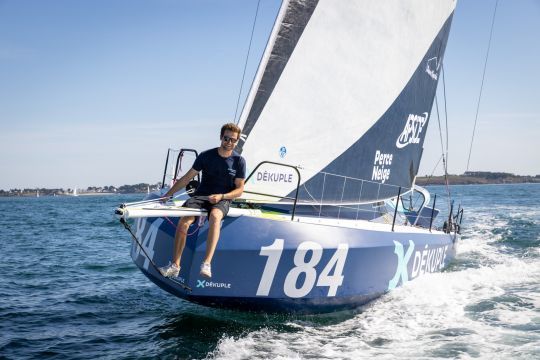
What developments have taken place in the winter yards? Are there any designs that have stood out more?
There are surely developments in the different architects that I am not aware of. Especially for riders who want to get results.
For our part, we launched a new boat, the Mach 5, with a new hull and deck. Two boats were launched this summer. This is one of the latest designs.
We tried to make a boat that would be very tolerant in strong winds, especially downwind, with a fairly pronounced forward slant. This is the strongest choice of this new boat. It is also a boat that has made a lot of progress in light airs. From a performance point of view, she is quite good in all registers.
We also worked a lot on the ergonomics by taking into account the physical fatigue, more important on a Route du Rhum, which lasts more than two weeks. The idea is to be able to tire less, to be well protected, to be able to stay active on a well-protected watch seatâeuros¦ After two weeks at sea, we can start to see the value of this work.
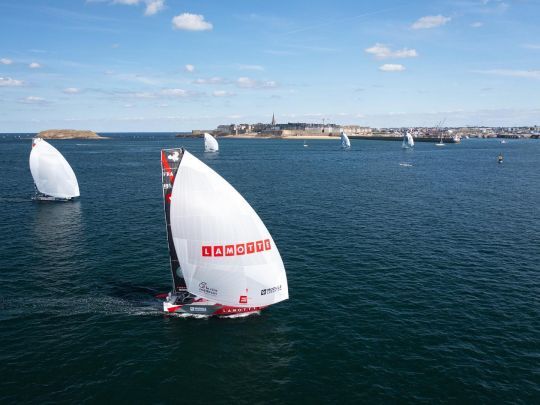
What did you think of the 40Malouine race, a rehearsal before the Route du Rhum?
The level is really high! The level of commitment and preparation is impressive! Today, it's difficult to be in front in Class40, you have to hang on. With an increasing number of scows, the classic boats no longer have a chance of winning.
With the professionalization of the Class40 teams, is it still feasible to launch at the last moment and play the performance?
Ãa depends a lot on the skippers. For skippers who have a good knowledge of the support, it is not so much a problem as ça, if at the time of departure they have the right sails, the right equipmentâeuros¦
This is typically the case for Luke Berry, who has been racing in Class40 for several years. He has to adapt to a new boat, but he knows Class40 as a whole. It's interesting to have a new boat, because it's the synthesis of the latest developments. It's interesting from a performance point of view. It may seem like a challenge for those without experience, but Luke Berry has all the cards.
In Class40, there is no real reliability of the boat, as in other classes, because it is a fairly simple boat. You can always break a sail, encounter an electronic problem. But the boat is relatively reliable from the moment it is launched from that point of view.
How do you anticipate the next generation of Class40s? How much room do you have to learn from the RDR?
We'll see later since we've just launched our latest generation of Mach 40. Of course, it's possible to make things evolve, but we didn't plan it. For example, if we talk about having different bulb positions in the keel, it's not something we do. The boat is optimized as it is, and if necessary we will modify it.
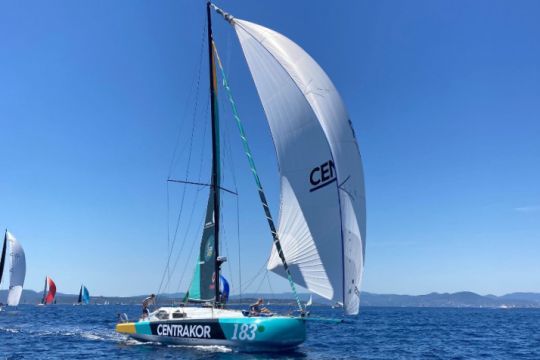
Does a race like the Route du Rhum, which is certainly a major event, but which is organized every four years, influence the design of the boats, which are used more for short races where downwind sailing is not the preferred mode?
It is certain that the Route du Rhum is a major race. The Class40 is also designed to do transatlantic races, like the Jacques Vabre or the Route du Rhum, to name only the most famous. We are interested in the statistical distribution of wind and speed for this type of race. We also look at races like the Fastnet, the Normandy Channel Race to have a boat that is efficient in light airs, that goes upwind well. Having a flat spectrum is quite interesting. In the design loop, the Mach5 has the Route du Rhum as its primary objective. But also the other races, not necessarily with the same level of priority. In any case, the choices made should be effective on all types of races.
Will the new materials, such as Elium resin from which the Class40 Captain Alternance is built, be analyzed and may prove to be the future of construction?
It's very interesting to be able to test materials like that in a racing context, where boats have to perform in sea conditions. On a Route du Rhum, the conditions are difficult. It's great to see how the material ages. It will be fabulous to have some perspective.
